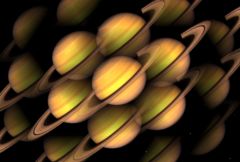S_FlysEyeHex
Breaks the image into hexagon shaped tiles and transforms the image within each shape, to create a fly's eye view effect. Increase Edge Softness for a smoother overlap between the tiles. The 'Inside' parameters transform the Source image before it is tiled into the pattern, and the 'Tile' parameters transform the entire fly's eye pattern.In the Sapphire Stylize effects submenu.
Inputs:
- Source: The current layer. The clip to be processed.

|